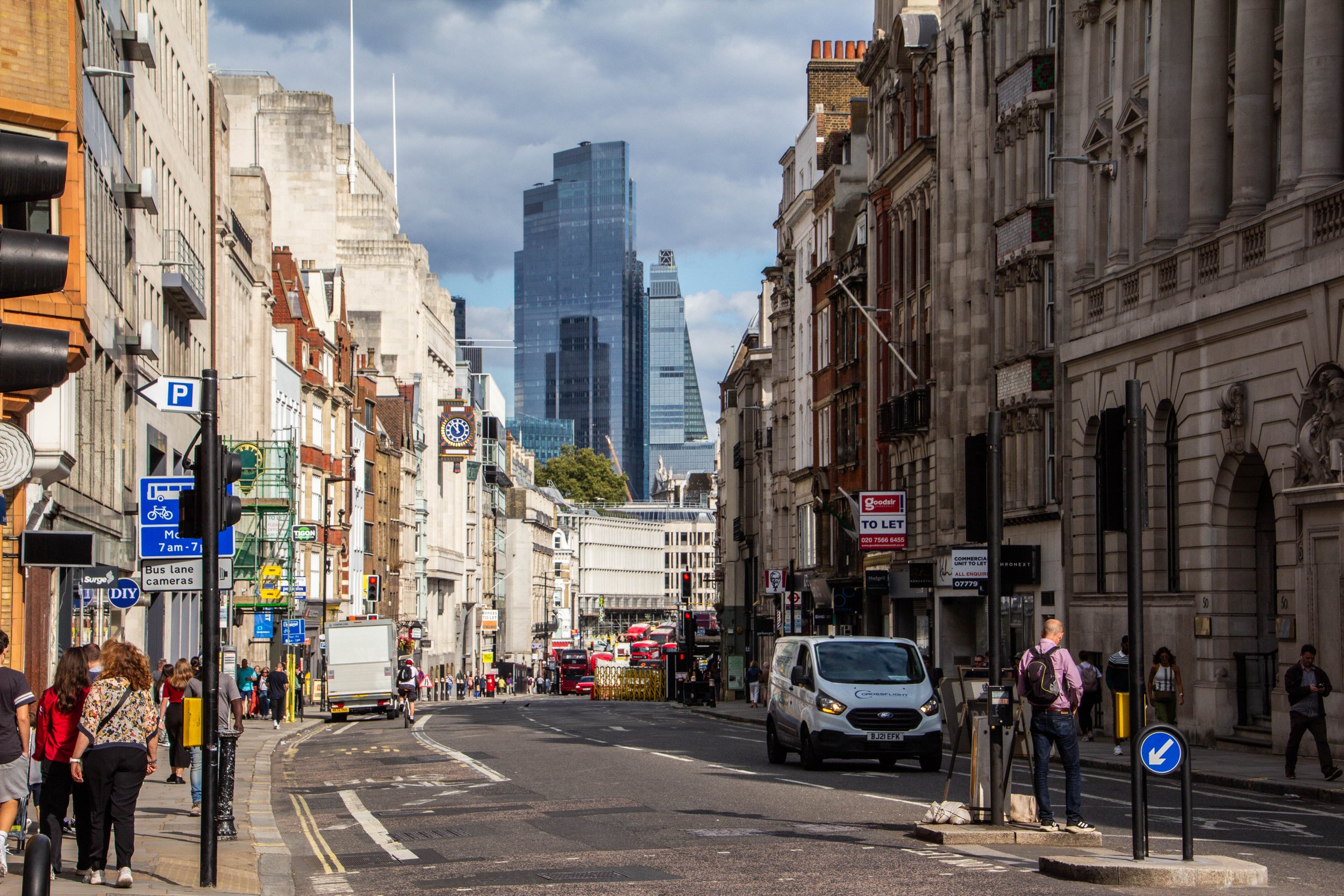The longer I live in London, the more I realize that—to the typical Brit—living in London is often viewed as a necessary evil. They come and work in London while they’re young, but even then they’ll get out of town on the weekends often. Of course there are lots of people who are born & raised in London as well, but quite a large proportion of these folks are “third culture kids” (i.e. they were raised in a household where the culture is not that of Great Britain, typically the children of immigrants). Compared to American cities, London puts very little pressure on its residents to conform to its cultural identity. It really just leaves you alone! It’s got to be the most diverse city on the planet, and that means that there is no “normal”—all the 3rd culture kids are growing up with wildly different interpretations of what British culture is and how they fit into that. And that’s great! I’m an immigrant myself I suppose, so it’s a good bet that my own children may end up in this category as well. London is a really unique place… but this article is not about London. Quite the opposite, in fact.
As an expat in a place as diverse and dynamic as London, it’s a bit perplexing how difficult it can be to interact with the actual British cultural/ethnic identity here. 90% of the people I interact with on a daily basis are either expats (immigrants)… or 3rd-culture-kids who have created a sort of un-guessable custom hybrid between their own culture and that of England. As a result, I regularly forget that ENGLAND is the country where I live. Increasingly, I have come to realize that, if you want to interact with “England,” it’s best to get out of London. My current working hypothesis is that the smaller towns and the countryside are where you will find the elusive “England.” So I think there are quite a few visits to English towns in the future of this blog.
Today, we’re starting with what is (supposedly) one of the best little towns that the south of England has to offer: Bath. Obviously my sample size is too small for me to personally verify this (yet), but comparison aside, it is very nice.
An Intro to Bath
Bath is a small town of about 94,000 people in the county of Somerset. By train, it is about 2 hours west of London, and it’s closely neighbored by Bristol and the Welsh border to the northwest. By all accounts, this is one of the most beloved and beautiful little towns in the South of England. There are lots of other sub-regions of the British Isles that I’m sure have lots of other beautiful towns… but in terms of day trips out of London, Bath is definitely in the top 3.
There is more to know about Bath of course—including the super un-creative way it got its name—but I’ll cover those details in due course. For now, here’s the map. You can enter into this place as uninformed as I was when my train rolled up one morning in late October, and then we will learn about this place in real time, together. 🌈
Exploring Bath
Bath is everything that you want a small English town to be. Especially on a crisp fall morning.
To be fair, it might be slightly bigger than the term “small town” implies, but it had all of the charm that comes with that term and more. Before we got to any of the main “attractions” in Bath, I just want to share some pictures of my time walking around the town, because these—as they tend to be—are my favorite pictures. Here are a few notable bullet points from this gallery:
The river that you will see flowing through the center of town is The River Avon. The arching columns you see over that river are part of the Pulteney Bridge. This bridge actually has a shoppes on both sides of the road, so you will see a picture through a bakery window where you can see the river flowing below it.
Some of my favorite pictures in this gallery were taken in and around Queen Square, which is small park just north of the center of town. It’s far enough away from the “main drag” that it manages to feel quiet and charming while still encapsulating all of the magic that comes with “urban” Bath. And in the fall… *chef’s kiss*
And then there’s “The Recreation Ground”, which is perhaps the most generic name for this that I’ve ever heard in my life. There are only a couple of photos of this in the gallery, but it actually turned out to be really important to the image of Bath that I now carry with me in my head. It’s got an open sports field on the edge of town and a proper (albeit, small) stadium for the Bath rugby team to play. THIS helped spark in my imagination what life in Bath would be like more than any charming pub or town square.
Bath Abbey
Bath Abbey is the centerpiece of the town. Incredibly, I think this might be the first time I’ve visited an “abbey” in Peter’s Big Adventure! The term feels eternally familiar to me after growing up reading the Redwall books by Brian Jacques. An “abbey” is basically the old term for a Christian monastery. So their design can vary wildly! Sometimes they look like fortresses, other time they are more low-key… and sometimes, as is the case in Bath, they can look like fully-blown Cathedrals! Indeed, Bath Abbey is not far off from the Gothic architectural splendor of the Canterbury Cathedral, which I covered last year.
Construction on the original monastery started in 675 AD. In its early days, the abbey was associated with the Benedictine order, but this association came to an end in 1539 in part of a wider crack-down on religious organizations around the British Isles on the orders of King Henry VIII as a way to bring more wealth under control of the crown. The abbey then fell into disrepair for decades, but was eventually revitalized when the crown designated it as an official parish of the Church of England.
If you want to see it today, you can book tickets here for £8.00. There are a few other more specialized tours offered as well, but during my visit we just opted for general admission.
The Roman Baths
And now, as promised, the super un-creative namesake of Bath.
As you may know, England and Wales were once part of the Roman Empire. And, in this spot, there is actually a natural hot spring. Fueled by geothermal activity, water—at a temperature of about 46 °C (114.8 °F)—rises through cracks in the limestone here at the rate of 1,170,000 liters per day. It just so happened that a major Roman military road passed right by this spot, so it was not long after their arrival in Britain, that the Romans noticed this little spot and built a bath house here! It would serve a place of rest and healing for injured Roman soldiers. Construction took place between 60 and 70 AD, and resulted in the establishment of a permanent settlement here as well, which was called Aquae Sulis (which is Latin for Waters of Sulis).
Sulis was a celtic pagan goddess, who was syncretically adopted by the Romans as a parallel to their own god, Minerva. From what I have been able to dig up, it sounds like Sulis was a local goddess, and there was actually a notable cult here that worshipped her for a few hundred years. One hilarious little detail is that about 130 “curse tablets” were recovered here. Basically, if anybody living in Aquae Sulis was wronged, they would come here and write their complaints on lead tablets addressed to Sulis, along with a request for how the perpetrator of the alleged crime should be punished. These are on display at the Roman Baths and some of them are unbelievably, hilariously petty. The fact that people had to chisel these things into stone makes them all the more hilarious. They would say things like “My favorite gloves are missing. I don’t know who took them, but whoever they are, please make them go blind!” To be fair, many of the people living in this time didn’t have many possessions, so these seemingly trivial things may have been really important to them… but to me, it really served to underscore that the people living in this time were EXACTLY the same as we are now.
Honestly, it reminds me of Dwight’s complaint file against Jim in the office.
To be real, modern humans have existed for like 300,000 years. This stuff in Bath seems like ancient history (and, being ~2,000 years ago, it literally is), BUT in the context of the human existence, both you, me, and the people inscribing these tablets exist together in the latest 0.067% of human history. So, I think it’s safe to say that we’re pretty much exactly the same.
Anyway, history aside, it’s a very cool place today. Apparently you could still swim in the baths until the 1970s! But then a girl contracted a brain parasite from the water and died, so they stopped letting people swim here. Probably for the best. So leave your swim trunks at home! You can buy tickets to enter for £25.50 or £22.50, depending on the day.
So that’s Bath! As important as the abbey and the Roman baths are, what I loved most about Bath was the place itself. It’s extremely charming—and, like I said at the top of this article—a rare taste of ✨ENGLAND✨ for me. I look forward to my next excursion from London when I can explore more of the smaller population centers here.
For now, I’ll leave a nice acoustic song befitting of English autumn; something that can hopefully be a nice reminder to empathetically embrace and accept the humanity not only in ourselves, but in those around us, those that came before us, and those that will come after we’re gone. Because, in another 2,000 years, somebody might be in a museum reading the angry Yelp review you left. 😂


































































































































